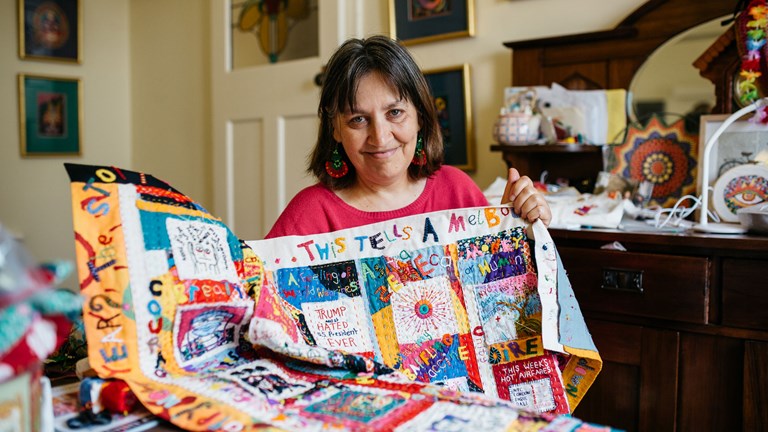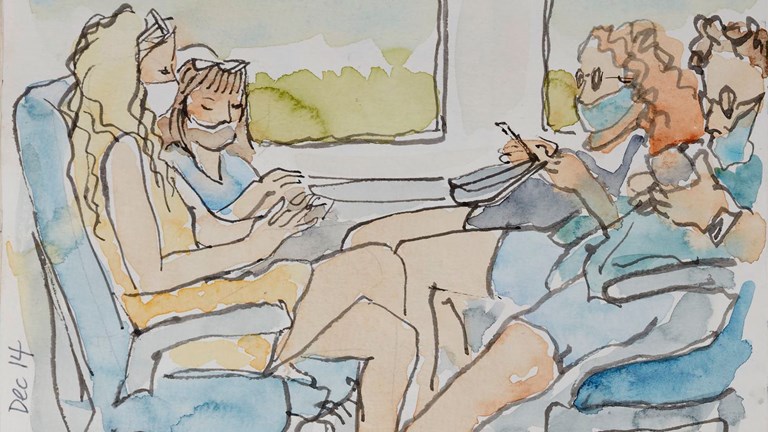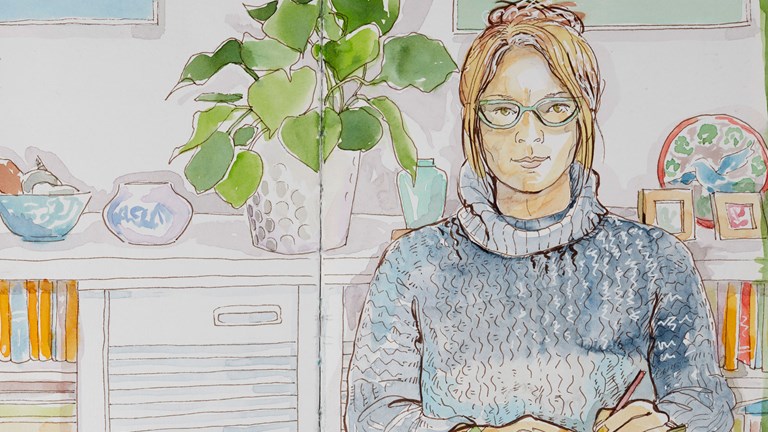

Art as Therapy
Four Creative Responses
‘Every stitch contains a piece of me. It helped control my mind, as the world appeared to spiral out of control.’
– artist and quilter Nicole Kemp
‘My daily drawing became a reassuring therapy.’
– artist and art teacher Liz McGrath
‘Writing haiku poetry freed me from the confines of lockdown.’
– writer Louise Hopewell
‘Writing poetry became my outlet, my coping mechanism.’
– poet Marina Maggs
During the emergence of the coronavirus pandemic in Victoria in early 2020, Victoria’s creative arts community was one of the first sectors to experience cancellations and economic hardship due to coronavirus restrictions. The closure of venues, theatres, museums and galleries had an immediate and devastating impact on artists and audiences. Subsequent lockdowns – including over two months of Stage 4 lockdown from August -October 2020 – created serious and ongoing difficulties for many individuals, artists and creative arts organisations.
And yet, through immense challenges and hardships, the creative arts sector has proved to be crucial for the mental health, education and economic wellbeing of Victorian communities. Artists have responded to the pandemic in extraordinary ways, rallying together to raise funds for arts communities to continue to share their works, and finding new avenues – such as digital realms and virtual exhibitions – to share their works.
Not everyone has been able to creatively respond during lockdown, but for many individuals, creative mediums such as painting, quilting and poetry have provided an important vehicle for channelling emotions during a difficult and unstable time. As the wider Victorian community stayed indoors and at home for long periods, art has provided a form of therapy for many individuals, and for some, a window into another world.
The following four creative responses were all submitted to Engage Victoria in late 2020-early 2021, and represent examples of the important role that art and creative writing played during the COVID-19 pandemic, as well as the various ways that some individuals were able to seek solace and reprieve in creative pursuits.
This story was collected and written by Marita Dyson, Hannah Perkins, Moya McFadzean and Catherine Forge in collaboration with Nicole Kemp, Louise Hopewell, Marina Maggs and Liz McGrath.









